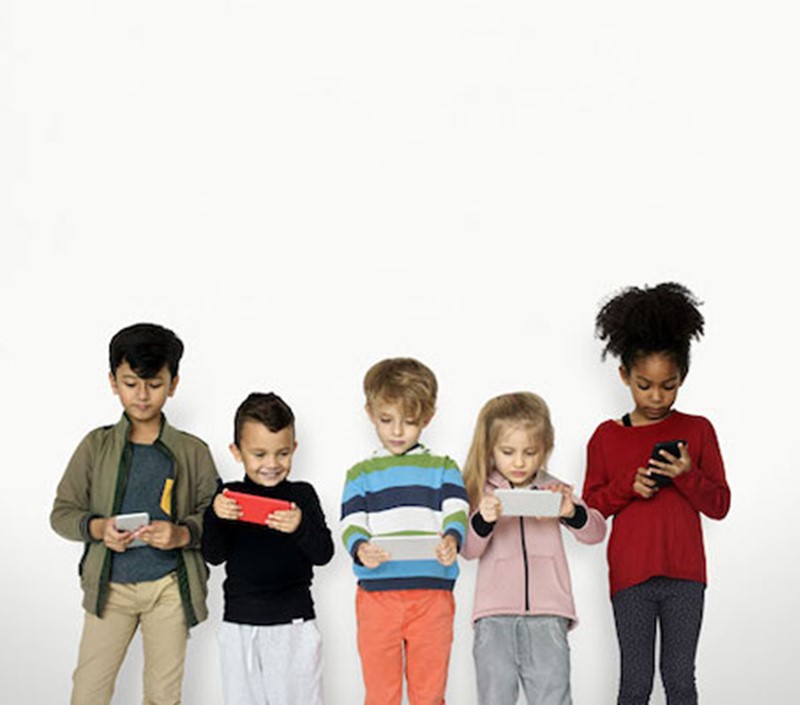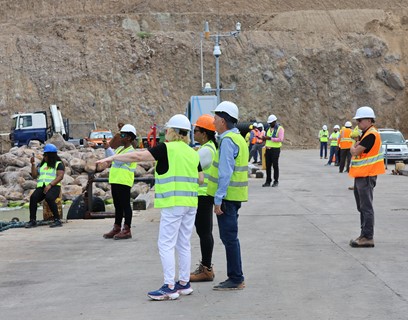
What is it like to be a child in 2019? A new OECD report, “Educating 21st-Century Children: Emotional Well-Being in the Digital Age,” says that while better support for physical and mental health has improved modern children’s lives, access to tablets and smartphones before you learn to walk and talk has consequences, good and not so good.
21st Century kids are more likely to be only children, increasingly pushed by “helicopter parents” to do more. As new technologies offer them limitless online opportunities, are new digital citizens finding a healthy balance? How are they dealing with new risks such as cyberbullying? How has parenting changed? What does a modern friendship look like? How can educators, parents, health professionals and psychologists work together to support youth?
Tracey Burns, an author of the new OECD report, is a senior analyst in the OECD’s Center for Educational Research and Innovation. The Global Search for Education welcomes Tracey Burns.
Tracey, in your opinion, what are the main pros and cons of digital technology for children today and as tech develops in the years ahead?
Young people today use digital tools to create content and socialize; to play, communicate and learn; and to work and share. Yet despite the many advantages of being online, the reality is that all digitally engaged children are exposed to cyber risks. These include consumer content-related risks such as online fraud and marketing and harmful content. In addition, there are contact risks such as online predators, cyber-bullying and sexting, and privacy-related risks such as privacy breaches and identity theft. Children are increasingly required to navigate ambiguity, reconcile conflicting viewpoints and identify fake or misleading online content. The key is to strike the right balance between empowering children to take advantage of the digital world while also protecting them from potential risks. While some governments (and parents) respond by restricting access, these strategies can come at the cost of digital opportunity and skill development. In contrast, building capacity through shared digital activities can create a safer environment without limiting children’s use of digital technologies or hindering their agency and learning.
Which of the challenges faced by today’s kids are “new” or “amplified” or “different” as compared to children who grew up in the past?
That’s a great question. Digital technologies empower children’s self-expression, information seeking and socialization, and in times of need, help could be just a phone call – or WhatsApp message – away. At the same time, children in the 21st century are reporting more anxiety, including from increased pressure to excel in an ever more competitive educational environment. Technologies that help parents stay connected to their children also make it more difficult to monitor children’s behavior once they have their own devices. However, it’s important to remember that many of those trends — better health, safer environments, growing obesity and stress have been here for decades. Also, some things have not changed at all, for example, the importance of strong and positive attachment with parents, as well as warm and supportive friendships. When thinking about 21st century children, it is equally important to understand what has not changed as it is to identify what has.
Can you speak specifically about sharenting and its effect on children.
This is a tough one. On one hand, it is a very understandable practice among modern parents: They can show their pride and find parenting-related advice and social support. However, it is not benign. Children, especially the youngest ones, are often not asked before their photos are posted. As they age, they can become frustrated with parents oversharing, especially posting inappropriate photos of them (naked and semi-naked or showing them in unfavorable situations). Some scholars argue that sharenting not only jeopardises children’s rights and privacy, it can also negatively affect both the parent-child relationship and child well-being. While research is still emerging on this topic, there are some great guides that suggest protective practices, such as face-covering, blurring identifying information, giving children veto power over images before posting, etc.
What research related to child well-being do you believe needs to be done moving forward and on an ongoing basis?
Where do I start? It’s a long list, and our just released book goes into considerable detail. I’ll just suggest three priorities. For emotional well-being, examining multiple outcomes and indicators that are the combined effects of stress, anxiety and depression, rather than each independently, would be important to better understand what works, when and in which contexts. For emotional well-being and digital technologies, there needs to be a much stronger evidence base. There is little evidence, for instance, suggesting that a significant number of children/adolescents are dependent on devices to the extent that they are at risk of major negative health outcomes. Also, there has not been an explosion in the cyberbullying rates. However, it doesn’t mean these issues are not important – anyone suffering from cyberbullying can speak to how devastating it can be. But the headlines on risks tend to obscure the potential positives that come from responsible digital engagement. What we need from a research perspective is rigorous longitudinal studies, controlled experiments with representative samples, work on young children — the 0-8 age group. Right now there is a paucity of data, and what is there is often outdated; for example, new research looking at Facebook when children now are much more likely to use Snapchat or TikTok. But it’s not always clear how to resolve this issue – research takes time, and good quality longitudinal research takes more time. However, given the speed of technological change, time is in short supply.
How can OECD countries ensure development of positive digital citizenship? Which countries can we learn from?
Digital citizenship is not just about building skills; it’s also about actively and responsibly participating in the online world. Education systems seek to develop this in various ways, such as updating and expanding national curricula, upskilling teachers and working with community partners. Our report draws attention to several examples. In the Flemish Community of Belgium, the not-for-profit Mediawijs collaborate with other groups to train teachers on how to foster digital literacy and citizenship among their students. In Latvia, the Superheroes on the Internet social initiative – a partnership between State Police and Net-Safe Latvia – campaigns for digital citizenship, media literacy and online child safety. The Australian School Wellbeing Framework, meanwhile, helps schools build inclusive and positive environments, both online and offline, through promoting visible leadership, family partnerships and positive behaviors, including digital etiquette.
What are your overall main recommendations for parents and educators to ensure child well-being in a digital world?
Well, this is always a dangerous question – the speed of technological change makes this discussion a continuously moving target, and reports such as this can become quickly outdated. The task for education systems and families around the world is to try to stay ahead of, or at least on top of the curve. Education, like all public sectors, must break down its silos and work across government departments and research disciplines. It must engage an increasingly broad variety of actors, including the private sector. It must evolve and grow as our societies and citizens develop, anticipating change and finding preventative solutions and opportunities rather than simply reacting to problems.
Parents can encourage shared digital activity with their children, such as watching a video together. This creates a safer environment without hindering children’s agency and learning, helping them better manage risk and learn when things go wrong. But not all parents have the required skills to do this, and with older children and youth it becomes much more complicated, as they tend to be early adopters of new digital technologies and they are also the most targeted group by digital software developers and platforms. This means that parents are not necessarily able to appropriately guide their older children in their online experiences. This makes the involvement of schools and the broader community even more important for building digital citizenship and digital skills more generally.
There is no going back. We are more connected than ever before, and many children have access to tablets and smartphones before they learn to walk and talk. Empowering our children to be active and empowered (digital) citizens is not an option: it is necessary to keep our children happy and healthy, both on and off line.
Thank you Tracey.


